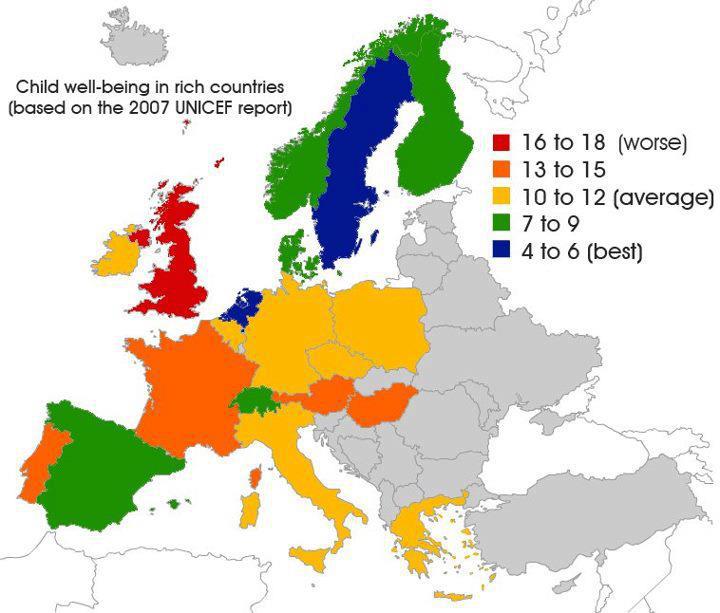Poverty
[back] Statistics
[back]
Child health
"It is also in the interests of a tyrant to keep his people poor, so
that they may not be able to afford the cost of protecting themselves by arms and be so
occupied with their daily tasks that they have no time for rebellion."- Aristotle in
Politics, J. Sinclair translation, pg. 226, 1962
[You can imagine the level of poverty in smallpox era (1,
2,) when you know the level today, and
in the 1960's, yet
we are meant to to believe smallpox vaccination is the only defence against poor
diet, dire sanitation, overcrowding, dirty
water, cold, poor ventilation, depression etc. Absurd. ]
See:
Infection
& nutrition Well being Infant death rate (under 1 year
old)
Main factor:
Sanitation
Co-factors
Toxic air
Dirty water
Malnutrition
(smallpox era)
Overcrowding

[2014 Oct] When poverty meant more
than just not having the latest PlayStation or trendy trainers: Shocking photos
capture the real squalor of Britain's slums that existed just 40 years ago
[2010 Feb] In search of Arcadia:
In the Hungry 1930s mothers starved to death to feed their children. The
37-year-old mother of seven collapsed and died while bathing her six-month-old
twins. ....She managed only by going without food herself, and though the
immediate cause of her death was recorded as pneumonia, the coroner concluded
that this would not have proved fatal if she'd had enough to eat. ...Annie died
in London, but it was beyond the capital that the worst effects were felt from
the economic downturn that followed the financial crash of 1929. Radical writer
George Orwell was horrified when he left his part-time job in a bookshop in
leafy, well-off Hampstead and ventured to the North of England to observe the
condition of the working classes. He returned furious at what he found -
hard-core unemployment, poverty, deprivation, exploitation, squalor and utter
hopelessness. ... Surveys indicated that 80 per cent of children in the mining
areas of County Durham and the poorest areas of London showed signs of
rickets.....But mostly I had potatoes and bread and toast for myself.' As well
as her two daughters, this mother had five baby boys, all of them dead at birth.
'I'm certain it was because of the malnutrition,' she said. And she was probably
right. .'I have not tasted meat, potatoes or vegetables for over 12 months. Yet
I am told I get enough money to keep fit and strong.'
[2009 June] Village boycotts polio campaign
to protest civic conditions Residents of Sarvat village in the
Muzaffarnagar district, about 350 km from Lucknow, boycotted the vaccination
drive May 24 and said they will continue their protest till their complaints
about poor sanitation, contaminated water supply, and lack of garbage disposal
facilities are addressed.....“Go to any place around the village, you will
surely find filth and squalor… clogged drains that have become breeding ground
for mosquitoes and other insects,”.....With no garbage disposal system,
residents are left with no option than to throw the domestic waste onto the
roads. “In most of the village, you will not find any garbage bins, due to which
the waste here is thrown out in the open"
Quotes
According to the
National Center for Children in Poverty at Columbia University, 18% of
children in the U.S. live below the federal poverty level ($20,650 a year for a
family of four) and 38% of children live in low-income families.
[2006 UK] UK CHILD POVERTY - THE FACTS
New figures show that at least 3.4 million
children in the UK are blighted by destitution, their parents too poor to feed,
clothe or shelter them properly. THERE are currently 3.4 million children in
poverty, 27 per cent of all British children. THE UK has the fourth highest level of child
poverty of all 25 European Union countries. AROUND five per cent of all children live in
severe poverty.
Smallpox era
[Poor area Whitechapel has greater death
rate than affluent area--Hamstead] Mr. Alfred Milnes, M.A., in his masterly paper, printed in the Journal of the
Royal Statistical Society, Vol. LX., Part III., September, 1897, shows
conclusively that the reduction in infant mortality is entirely due to improved sanitation, children being peculiarly
susceptible to the effect of insanitary conditions. He has extracted from the
45th and 55th Reports of the Registrar-General the annual average death-rate per
million living in the decade 1871-80 and in the decade 1881-90. For
the towns of
Whitechapel and Hampstead, averaging these two decades, it appears that the
mortality for all ages is about 7,300 per million living greater in Whitechapel
than in Hampstead, while for those under five years old the mortality of
Whitechapel is about 37,500 per million living more than the mortality in
Hampstead, showing that the conditions adverse to life in Whitechapel are in the
case of infants under five years five times more fatal than they are upon the
population taken as a whole. These figures show that improved sanitation is
quite sufficient to account for the reduced fatality from small-pox in children.
[1921] Vaccination
and the State By Arnold Lupton MP.
This evidence is sufficient to show that the epidemic of 1885 was not due to
want of Vaccination. The fact is, parts of Montreal were in a very filthy
condition. The French-Canadian paper Le Monde said, referring to the sewers: "The proof that they are in a bad state is that the stench from the street
gullies in certain parts of the city is so powerful as to create nausea in
passers by." On the 25th November, 1885,
Montreal correspondent of the Toronto Mail
wrote: " The three Wards of St. Mary, St. James, and St. Lewis have contributed
about 90 per cent, of the deaths throughout. It is in these wards that the
10,000 cesspools exist which breed the small-pox and other epidemics which help
to fill up the mortality reports of the city."
On the 25th November, 1885, the Montreal Herald reported an interview with Dr. Garceau of Boston, Mass., who said, referring to the epidemic of small-pox: " I
attribute the chief cause to the frightful system of cesspits."
Since that time Montreal has greatly improved its sanitary condition, with the
consequent diminution of disease. Mulhall gave the general death-rate in that
town during the years 1878-1880 as 37 per thousand. The English
Registrar-General gave the death-rate for the years 1906-1910 at a little over
22 per thousand. Probably more recent figures will show a still lower
death-rate.
[1921] Vaccination
and the State By Arnold Lupton MP.
"Noticing the class of people among whom the disease is most
fatal, I was led to the conclusion that the cause in most cases was dirt, and that
vaccination was powerless to prevent it. I found that where there was most overcrowding
there smallpox was most prevalent. The worst case I have ever seen occurred three weeks
after re-vaccination."--- Dr Allinson
"WE have for some time past been hearing of the epidemic of smallpox in
Capetown, and of the vigorous measures adopted to enforce vaccination and isolation, but
we have heard little of the sanitary condition of the place. From an article in the Cape
Times, however, we obtain the following information
Capetown is buying its experience at a heavy price. Fifty
thousand pounds spent on a reservoir that will not hold water is a lesson that should not
require to be repeated. Pestilence abounding (for we have it in many forms), the fruit of
long-continued filth and neglect, scarcity of water, foul, unkempt, "unlovely"
streets, seas of mud in the winter and hurricanes of dust in the summer— worst of
all, a population ignorant as Arctic bears of sanitary principles, dead in a large
proportion to the commonest instincts of decency. We have taken very busily to flushing,
scouring, and quarantining, and making such atonement as is possible for past neglect and
apathy. But too late; the retribution has come, as come it must, when ever the plain
dictates of common sense and the laws of Nature are persistently violated. There is a very
large element in the population of Capetown that exists only to propagate dirt, and in
this they move and have their being. They make dirt as silkworms spin cocoons. They are
dirty by instinct, dirty by habit, and, alas! dirty by necessity. With instinct, habit,
and necessity constraining them, how can they be otherwise? Whole quarters of the town
have for a long time been so abandoned to dirt, that only an earthquake could efface the
evil effects on soil and atmosphere; and only if the earthquake should swallow up the
inhabitants would there be some hope for these localities in the future. But let the truth
be realised; a people born, bred, and educated in dirt will bear fruit after their kind.
Spite of sanitary inspectors and municipal codes, they will be dirty; they will conquer
all with dirt, and subdue the very sky to its influence. There is but one way, we believe,
of overcoming this destructive element, and that is by a process of sap and mine. Habits
must be changed. The dirt-loving must be made dirt-hating. There are elements in our
population that are not easily impressed and even approached. But we decline to believe
the thing impossible, and it ought to be tried. Capetown must go from bad to worse if
sanitary regulations are not more strictly enforced; for its population is increasing, its
open spaces are diminishing, and the foes to health are augmenting in proportion."----- CONDITION OF CAPETOWN.
Vaccination Inquirer 1883. Vol 5, p15
[Report by Dr. Airy in Supplement to 11th Annual Report of the Local
Government Board.]
"A. house, rented at £6, stands in a flat swampy meadow, liable
to be flooded. It is approached by a causeway of faggots laid across the swamp. Two rooms
on the ground floor, and two above. One of the lower rooms is a damp, cold, dirty room
that serves as scullery, rubbish-hole, and slop sink. Slops are emptied at one corner of
this room where a hollow has been excavated in the rough brick floor, communicating, by a
large hole broken through the base of the wall, with a corresponding hollow in the mud
outside, whence the filth soaks away through the surrounding grass and its own accumulated
sediment. In this room nine persons slept! A
loose-made door opens directly into the shed
where sheep, more or less diseased, were kept. The mother had been already attended for
typhus and puerperal fever in this same house! A cattle shed also adjoins the cottage.
Eight persons had smallpox, and two died. Very defective drainage reported. The stinking
carcasses of two sheep lay near the cottage at the time the small-pox was in the
house."….not one of the inmates appears to have been unvaccinated!"---OUTBREAK OF SMALLPOX AT BOURNE BRIDGE.
Vaccination Inquirer 1883. Vol 5, p15
"What
neighbourhoods do they visit? The filthiest. What towns do they select? Those
where sanitary conditions are the most neglected. Note the last small-pox
epidemic, and take Leeds as an example. Who were the victims? The very lowest
classes of society, children that were filthy, neglected, and ill fed, others
living in houses that were overcrowded, destitute of proper ventilation, and in
courts and alleys where sanitation is a term unknown; adults who are tramps,
drunkards, prostitutes, men and women without homes, wanderers,—with a very
modest sprinkling of the very lowest sections of the working classes; these
formed 7-10ths of the patients who passed through the
hospital of the Leeds Union, and these are the very self-same people, resident
in the same houses, streets, and neighbourhoods, who would have fallen the first
victims to any other epidemic which had sprung up. If they had not yielded to
the small-pox they would have succumbed to scarlet fever, typhoid, or the like.
If the unsanitary surroundings are there, and the physically deteriorated in
health within reach, then the conditions for producing an epidemic are present,
and the result cannot fail to be disastrous. The strong and healthy do not take
the small-pox. If we divide Leeds in the centre due north and south, nearly all
the cases occurred in the eastern half of the town,—the healthiest half, the
western, was free from the scourge. Belgravia and May Fair had no small-pox, but
there was plenty of it in the narrow streets and the courts and alleys situate
in the east of London. Again, our healthiest towns, such as Leamington,
Cheltenham, Brighton, Hastings, and Scarbro', had little or no small-pox during
the recent epidemic, whilst Birmingham, Leeds, Manchester, and similar large
centres of industry suffered severely. Do not these facts confirm our previously
expressed opinions that small-pox is a filth-disease, and like all
filth-diseases, of the zymotic order, the only protection is in general and
wide-spread cleanliness?"---JNO.
PICKERING, F.S.S., F.R.G.S. [1876.
THE STATISTICS OF THE MEDICAL OFFICERS TO THE LEEDS
SMALL-POX HOSPITAL EXPOSED AND REFUTED]










